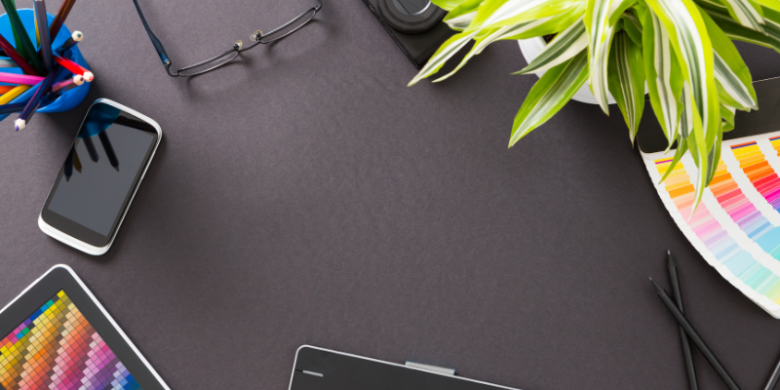In recent years, there has been a significant recognition of the importance of connecting with nature in design. Biophilic design, an approach that seeks to incorporate natural elements and references to nature in spaces and products, has gained prominence as a way to enhance user experience. By strategically using materials, colors, shapes, and patterns inspired by nature, biophilic design offers a way to bring the serenity, harmony, and vitality of the natural world into digital environments and interfaces. In this article, we will delve into the concept of biophilic design and how it can be applied to create engaging and beneficial user experiences.
The science behind biophilic design
Biophilic design is grounded in research that shows the benefits of being in contact with nature for physical and mental health. Studies have demonstrated that the presence of natural elements in indoor environments can reduce stress, improve concentration, enhance creativity, and promote overall well-being. Understanding the scientific basis behind biophilic design is essential to fully harness its benefits.
Principles of biophilic design
There are several principles that guide the application of biophilic design. They include the integration of natural elements such as plants and water, the creation of visual connections to the external environment, the use of organic materials and textures, the incorporation of natural patterns, and the consideration of natural lighting. Understanding these principles is crucial in creating spaces and interfaces that are authentically biophilic.
Biophilic design in architecture and interior design
Biophilic design has been widely adopted in architecture and interior design. Biophilic spaces are designed to mimic natural environments, bringing the feeling of being outdoors into homes or offices. This can be achieved through the incorporation of elements such as green walls, indoor gardens, abundant natural light, and the use of natural materials. We will explore examples of projects that creatively and impactfully apply biophilic design.
Biophilic design in user interface
In addition to architecture and interior design, biophilic design can also be applied in creating digital interfaces. By utilizing nature-inspired visual elements such as natural colors and textures, subtle animations that mimic natural movements, and the creation of intuitive layouts that follow nature’s patterns, it is possible to create more engaging and enjoyable digital experiences for users.
The benefits of biophilic design
Biophilic design offers a range of benefits for both users and businesses. For users, the presence of natural elements in design experiences can promote a sense of calm, relaxation, and connection with the environment. This can lead to improved productivity, mental well-being, and overall satisfaction. For businesses, adopting biophilic design can result in increased user engagement, longer time spent in apps or websites, and a more sustainable and conscious brand image.
Conclusion
Biophilic design is a powerful approach that can transform how we design spaces and digital interfaces. By bringing nature into our creations, we can create experiences that promote well-being, connection with the environment, and a sense of harmony. Understanding the principles and benefits of biophilic design empowers us to create more human-centered, appealing, and meaningful solutions for users. As we continue to explore the possibilities of biophilic design, we can expect to see a growing integration of nature into user experience, paving the way for a more sustainable and enriching future.
Incorporating biophilic design principles into our creative process requires careful consideration and attention to detail. It involves understanding the unique needs and preferences of users, as well as the specific context and purpose of the design project. By embracing the concept of biophilia, designers can create experiences that not only meet functional requirements but also evoke emotional responses and foster a deeper connection with nature.
One aspect to consider when implementing biophilic design is the use of natural materials. Incorporating elements such as wood, stone, or bamboo can introduce a tactile and sensory experience that mimics the feeling of being in nature. Additionally, using organic shapes and patterns inspired by leaves, flowers, or water ripples can add a sense of dynamism and visual interest to the design.
Color plays a vital role in biophilic design as well. Natural hues such as earth tones, greens, and blues can evoke a sense of tranquility and evoke associations with natural landscapes. Soft, muted colors can create a calming effect, while vibrant and saturated colors can add energy and vitality to the design. Understanding the psychological impact of colors and their connection to nature is essential in creating the desired emotional response in users.
Another crucial aspect of biophilic design is the incorporation of natural light. Maximizing the use of natural light sources, such as windows and skylights, not only reduces energy consumption but also creates a dynamic interplay between light and shadow. This interplay can evoke a sense of depth and visual interest, enhancing the overall user experience.
In the digital realm, biophilic design can be achieved through the use of high-resolution imagery depicting natural landscapes, wildlife, or plant life. These visuals can be integrated into backgrounds, illustrations, or even as part of animations, immersing users in a digital environment that mirrors the beauty and serenity of the natural world.
It is important to note that biophilic design is not limited to specific design disciplines or industries. It can be applied to various contexts, including website design, mobile apps, product packaging, branding, and even virtual reality experiences. The key is to understand the principles and adapt them to the specific project’s needs and goals.
In conclusion, biophilic design offers a unique approach to creating user experiences that foster a deep connection with nature. By incorporating elements inspired by the natural world, designers can evoke emotions, promote well-being, and create memorable experiences for users. Whether in physical or digital spaces, the integration of biophilic design principles can transform the way we interact with our surroundings and enhance our overall quality of life. As we move forward, it is important to embrace this design approach and explore its potential for creating meaningful and sustainable solutions in an increasingly digital world. By harmonizing nature and technology, we can create experiences that inspire, engage, and connect us to the world around us.



